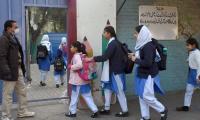There is no doubt that Pakistan has been seriously affected by terrorism. The start of military operations in North Waziristan in June 2014 was a watershed that gave hope that we were beginning to seriously grapple with the menace of terrorism; Operation ‘Zarb-e-Azb’ has achieved excellent results.
The second watershed in counter-terrorism was the adoption of the National Action Plan, which displayed the clear resolve of the political parties and the military establishment, after the devastating terrorist attack by the TTP on the Army Public School in Peshawar in December 2014. The Rangers operation in Karachi added to the hope that we were finally a step ahead of the terrorists.
But once again the terrorists seem to have made a comeback as seen in the recent terrorist attacks all over the country, especially the carnage in Charsadda on January 20. The terrorists may not have made a strong comeback but are alive and kicking. To completely root out terrorism we will need to add other arrows to our quiver besides kinetic punch. While we continue to fight this menace on a day-to-day basis there is a need to revisit the drawing board and carry out a realistic assessment. Here are a few guidelines for consideration.
NAP is a good starting point. However, in essence NAP is political guidance by all the political parties under the leadership of the prime minister. It is a consensus document agreed to by political parties of various shades and does not spell out which department or agency is required to do what nor does it spell out who will coordinate the overall counterterrorism effort.
Obviously the military is playing the lead role in this war. Other agencies like the police, intelligence agencies etc are also making a contribution but what is lacking is the solid integration of all agencies and departments of the government who have a role to fight terrorism. No agency is coordinating this national effort.
After receiving political guideline from all political parties, it was the responsibility of the federal government to develop an ‘Integrated Counterterrorism Plan’ and designate a coordinating agency to continually oversee progress. The million dollar question is: which component of the government was to develop the broad CT strategy and integrated counterterrorism plan? Nacta seems to be the logical choice. However, in its current form Nacta is totally ineffective – neither manned nor equipped to undertake this vital task.
Despite political dithering, in June 2014 the military launched the kinetic component of the counterterrorism effort through Operation Zarb-e-Azb. No doubt military operations represent the leading edge of the counterterrorism effort and have been very successful, but on its own the kinetic component will not root out terrorism.
Members of the TTP, Al-Qaeda and now IS are willing and happy to lay down their lives in the service of their cause. Kinetic action will eliminate a hundred terrorists but another 100 will happily take their place to fight for their cause.
An important component of the counterterrorism strategy (besides the kinetic) should be to convince the terrorist that his ideology is flawed, and an acceptable alternative ideology is presented to him and his supporters. Secondly, the government should endeavour to reduce the impact of other elements that contribute towards the terrorist’s motivation; issues like, poor quality education, misguided madressahs, poverty and – most importantly – the lack of justice in our society.
Not unlike the US after 9/11, the government of Pakistan launched its counterterrorism effort post-haste using the existing security infrastructure, with greater reliance on the kinetic effort. NAP was reinforced by the formation of Provincial Action Committees but the government failed to develop an Integrated Counterterrorism Plan at the national level. Nor did it establish a functional mechanism to coordinate the important task of counterterrorism at the national level. Adhocism continues to rule.
The need of the hour is to create an organisation at the national level that has the clout and expertise to bridge the civil-military divide and integrate the total national counterterrorism effort. Nacta, or a similar organisation, has the potential to be such an organisation but not with the present structure, location and leadership. Nacta should be placed and located directly under the office of the prime minister.
The army should be given the operational control of the total kinetic effort, with intelligence inputs from both civilian and military intelligence agencies. The equally important non-kinetic effort of the overall CT plan – like regulation of madressahs and their funding – should be done by the ministries of interior and religious affairs. Choking the financing of terrorists should be the responsibility of the Ministry of Finance with input from the interior. The Ministry of Education should be responsible for improving our public schooling, while reforming the criminal justice system should be the responsibility of the justice ministry with support of the Supreme Court.
This is just a sample list. A detailed CT plan will need to be worked by the reformed Nacta. It will also be Nacta’s responsibility to develop detailed CT plans and coordinate action of all agencies, both civil and military, literally on a daily basis.
A few years back in this very paper I had suggested reforming intelligence to fight terrorism. My key recommendation at that time was to upgrade the IB, police and Special Branch and make it possible for them and for military intelligence agencies like the ISI and MI to operate in a cooperative manner. I believe that requirement is still necessary – and remains unfulfilled.
The focus of this article has been to present a fair assessment of our current CT effort and outline some steps which will help us root out terrorism from our country. We need to improve and upgrade our non-kinetic CT effort and establish a potent agency that has the capacity to coordinate our overall CT strategy on a daily basis and effectively bridge the civil-military gap.
The writer is a former national security adviser. Email: balusa@hotmail.com
Disturbances that began in 2023 with attack on school have escalated rapidly in recent weeks
Obvious ineptness and lack of empathy that underpins our criminal justice system need not be recounted
Women constitute about 22.63% of formal labor force, while men make up 84.79%
Responsibility falls on Global North to address issues facing Global South before it collapses entirely
FAO recognises home gardening as crucial strategy to enhance household food security and nutrition, particularly in...
Pakistan’s judicial system has evolved in a complex manner since country’s inception







